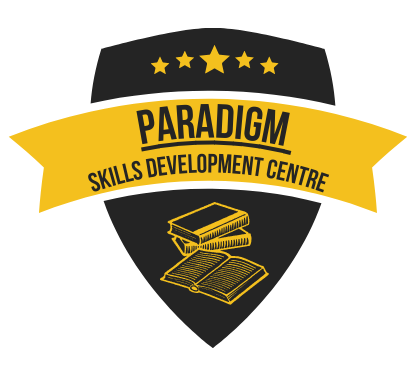Course Introduction
The ICTQual Level 3 Award in Paediatric First Aid (Annual Refresher) is designed to provide essential updates and refreshers for individuals who are responsible for the care and safety of children. This course ensures that participants remain competent and confident in delivering paediatric first aid, adhering to the latest guidelines and best practices.
Course Overview
This annual refresher course revisits critical aspects of paediatric first aid, emphasizing practical skills and theoretical knowledge. The training covers the recognition and management of various paediatric emergencies, ensuring that participants can provide effective and timely assistance to infants and children in distress.
Course Study Units
- Introduction to Paediatric First Aid
- Assessing Emergency Situations
- Resuscitation (CPR) and Automated External Defibrillator (AED) Use
- Managing Unresponsive Casualties
- Choking
- Dealing with Wounds and Bleeding
- Fractures and Dislocations
- Head, Neck, and Spinal Injuries
- Childhood Conditions
- Burns and Scalds
- Poisoning
- Eye, Ear, and Nose Injuries
- Bites and Stings
- Shock Management
Learning Outcomes
Upon completion of the course, participants will:
Introduction to Paediatric First Aid
- Understanding the Role: Describe the importance and role of paediatric first aid in childcare settings.
- Legal Knowledge: Identify the legal responsibilities of a paediatric first aider.
2. Assessing Emergency Situations
- Primary Assessment: Perform a primary survey to quickly assess the severity of the situation.
- Secondary Survey: Conduct a secondary survey to gather detailed information about the child’s condition.
3. Resuscitation (CPR) and Automated External Defibrillator (AED) Use
- CPR Techniques: Demonstrate effective CPR techniques for infants and children.
- AED Application: Use an AED correctly and understand the specific considerations for paediatric use.
4. Managing Unresponsive Casualties
- Recovery Position: Place an unresponsive but breathing child in the recovery position correctly.
- Ongoing Monitoring: Monitor the child’s condition and maintain their airway while waiting for emergency services.
5. Choking
- Recognition: Identify the signs of choking in infants and children.
- First Aid Response: Perform appropriate first aid techniques, such as back blows and abdominal thrusts, to relieve choking.
6. Dealing with Wounds and Bleeding
- Types of Wounds: Distinguish between different types of wounds (e.g., cuts, grazes, punctures).
- Bleeding Control: Apply appropriate techniques to control minor and severe bleeding.
7. Fractures and Dislocations
- Symptom Recognition: Recognize the signs and symptoms of fractures and dislocations.
- Immobilization: Demonstrate how to immobilize injured limbs safely and effectively.
8. Head, Neck, and Spinal Injuries
- Injury Identification: Identify potential head, neck, and spinal injuries.
- Emergency Care: Provide appropriate first aid to manage these injuries and minimize further harm.
9. Childhood Conditions
- Asthma Management: Provide first aid during an asthma attack.
- Allergic Reactions: Recognize severe allergic reactions and administer an adrenaline auto-injector.
- Febrile Seizures: Manage febrile seizures and other seizure types in children effectively.
10. Burns and Scalds
- Severity Assessment: Evaluate the severity of burns and scalds.
- Immediate Care: Apply appropriate first aid to cool and cover the affected area.
11. Poisoning
- Poison Identification: Recognize symptoms of poisoning from various sources (ingestion, inhalation, etc.).
- First Aid Response: Implement suitable first aid measures for different types of poisoning.
12. Eye, Ear, and Nose Injuries
- Injury Management: Provide first aid for injuries to the eyes, ears, and nose.
- Appropriate Responses: Use correct techniques to manage these specific injuries safely.
13. Bites and Stings
- Recognition: Identify different types of bites and stings (insect, animal, etc.).
- Treatment: Administer first aid for bites and stings, including managing allergic reactions.
14. Shock Management
- Signs of Shock: Recognize the signs and symptoms of shock.
- Treatment Protocols: Apply first aid procedures to manage and treat a child in shock effectively.
Course Benefits
- Enhanced Skills: Regular refreshers ensure that participants maintain high proficiency in paediatric first aid.
- Confidence: Participants will feel more confident in their ability to handle emergencies involving children.
- Compliance: This course helps meet regulatory requirements for childcare providers and educators.
- Practical Experience: Hands-on practice sessions improve practical skills and readiness for real-life situations.
- Updated Knowledge: Stay informed about the latest first aid protocols and guidelines.
Who Is This Course For?
- Childcare providers and early years educators
- School teachers and staff
- Nannies and babysitters
- Sports coaches and activity leaders working with children
- Parents and guardians
- Anyone responsible for the safety and care of children
Future Progression
After completing the ICTQual Level 3 Award in Paediatric First Aid (Annual Refresher), participants can further enhance their skills and knowledge by pursuing advanced first aid qualifications, such as:
- ICTQual Level 3 Award in Emergency Paediatric First Aid
- ICTQual Level 3 Award in Advanced First Aid
- ICTQual Level 3 Diploma in Health and Safety
- Specialized courses in managing chronic medical conditions in children
Staying updated with annual refreshers ensures that caregivers remain prepared and equipped to handle any paediatric emergency effectively, safeguarding the health and well-being of children under their care.
4o







